A standard 1973 nickel from Philadelphia (no mint mark), Denver (“D”), or San Francisco (“S”) is worth face value or a few cents in circulated condition. Uncirculated, pristine examples can command significantly higher prices, ranging from $6 to $2,695 at auction depending on professional grading. The mint mark location indicates origin: no mark means Philadelphia, “D” is Denver, and “S” is San Francisco. Major error coins are rare for 1973 nickels, so most collector value comes from high-grade, uncirculated specimens with no wear. Circulated examples remain common with minimal numismatic value.
Finding a 1973 nickel in your change might seem unremarkable, but understanding what separates a five-cent piece from a potential hundred-dollar treasure could change how you view these copper-nickel coins. While most 1973 Jefferson nickels remain worth their face value, specific varieties and conditions have sold for prices ranging from $6 to over $2,600 at major auctions. Whether you’ve inherited a coin collection or simply curious about that dated nickel in your pocket, this comprehensive guide breaks down exactly what determines value across all three mint marks.
Understanding the 1973 Jefferson Nickel Basics
The 1973 Jefferson nickel features Thomas Jefferson’s profile on the obverse, designed by Felix Schlag, with Monticello gracing the reverse. These coins were struck at three United States Mint facilities, each leaving a distinctive mark—or deliberately leaving none.
Philadelphia coins carry no mint mark, appearing blank on the reverse near Monticello’s right side. Denver-minted nickels display a small “D” in the same location, while San Francisco pieces show an “S” mark. The composition remains 75% copper and 25% nickel, weighing 5 grams with a diameter of 21.21 millimeters.
Production numbers varied significantly by mint. Philadelphia struck 384,396,000 nickels, Denver produced 261,405,000, and San Francisco created just 7,405,000 proof specimens specifically for collectors. These mintage figures directly influence rarity and value potential.
Circulated 1973 Nickel Values by Mint Mark
For coins that saw pocket change circulation, expectations should remain modest regardless of origin.
Philadelphia (No Mint Mark): Standard circulated examples trade for face value to approximately 10 cents. The massive production run ensures abundant availability, with millions surviving in various conditions. A coin showing moderate wear in Good to Fine condition holds no premium value.
Denver (D Mint Mark): Despite lower mintage than Philadelphia, Denver nickels remain equally common in circulation. Worn examples fetch face value only, with lightly circulated pieces occasionally commanding 7-15 cents from dealers seeking inventory.
San Francisco (S Mint Mark): While San Francisco focused primarily on proof production, any circulated “S” nickels encountered came from proof sets broken apart. These still carry minimal premium in worn condition, typically 25-50 cents maximum.
The key distinction emerges in preservation quality rather than mint mark alone for these common-date nickels.
Uncirculated and High-Grade Values
Pristine condition transforms 1973 nickels from pocket change into collectible assets with measurable premiums.
According to GreatCollections auction archives, professionally graded specimens demonstrate substantial value variation:
| Grade | Philadelphia | Denver | San Francisco (Proof) |
|---|---|---|---|
| MS-63 | $8-12 | $6-10 | N/A |
| MS-64 | $15-25 | $12-20 | N/A |
| MS-65 | $45-75 | $35-60 | N/A |
| MS-66 | $125-225 | $100-180 | N/A |
| MS-67 | $850-1,500 | $750-1,200 | N/A |
| PR-67 | N/A | N/A | $18-30 |
| PR-68 | N/A | N/A | $45-85 |
| PR-69 | N/A | N/A | $175-350 |
The exceptional MS-67 grade represents coins with near-perfect surfaces, showing full original mint luster and only microscopic imperfections visible under magnification. A 1973-D Jefferson nickel graded MS-67 by PCGS sold for $1,410 through Heritage Auctions in January 2023, while a Philadelphia MS-67 example reached $1,645 in March 2023.
Full Steps designation adds significant value. Jefferson nickels displaying complete, unbroken horizontal lines across Monticello’s front steps—typically found on fewer than 5% of mint state coins—command premiums of 200-400% over non-Full Steps examples at the same grade level.
San Francisco Proof Nickels Explained
San Francisco’s 1973 production focused exclusively on proof coins, created using specially polished dies and planchets, struck multiple times to achieve mirror-like surfaces and frosted design elements.
These proofs came packaged in sealed cellophane within official U.S. Mint proof sets, which sold for $7 directly from the government in 1973. The sets included the cent, nickel, dime, quarter, half dollar, and dollar.
Original 1973 proof sets in unopened packaging currently trade for $8-15, making individual proof nickels worth approximately $1.50-3 when removed from sets. However, professionally graded high-end specimens tell a different story.
A 1973-S nickel graded PR-69 Deep Cameo by NGC—featuring strong contrast between frosted devices and mirror fields—sold for $312 at GreatCollections in November 2022. The finest known example, a PCGS PR-70 Deep Cameo, commanded $2,695 at a 2021 Heritage auction, representing absolute perfection with zero discernible flaws even under 5x magnification.
Error Varieties and Their Market Values
Genuine mint errors on 1973 nickels exist but remain scarce compared to other denominations from this era. The Philadelphia and Denver facilities maintained relatively tight quality control, making significant errors uncommon.
Off-Center Strikes: Coins struck incorrectly positioned on the press show partial missing design. A 1973-D nickel with 15% off-center striking sold for $95 in 2023. More dramatic 50% off-center examples with full dates visible have reached $225-400 depending on eye appeal.
Double Die Varieties: Minor doubling appears on some 1973 nickels, particularly on date digits and lettering. However, no major doubled die varieties comparable to famous 1955 cents or 1972 nickels have been documented for 1973. Minor doubling adds $5-20 to otherwise uncirculated specimens.
Wrong Planchet Errors: Extremely rare instances of nickels struck on dime planchets create dramatic errors. While no confirmed 1973 examples appear in major auction records, similar-era wrong planchet nickels have sold for $1,500-3,000 when authenticated.
Struck Through Grease/Cloth: Debris on dies creating weak or missing design elements occasionally surfaces. These relatively minor errors typically add $10-35 to base value in collector markets.
Beware of damaged coins misrepresented as errors. Post-mint damage from dryers, vending machines, or deliberate alteration holds no premium value despite unusual appearance.
Authentication and Grading Considerations
Determining accurate grades separates profitable purchases from expensive mistakes when dealing with premium-value 1973 nickels.
Third-party grading services—primarily PCGS (Professional Coin Grading Service) and NGC (Numismatic Guaranty Corporation)—provide authentication and grade assignment for submission fees of $20-40 per coin. This expense only makes financial sense for coins potentially grading MS-65 or higher, where the added value justifies certification costs.
Key grading factors for Jefferson nickels include cheek and hairline details on the obverse, with unworn high points indicating mint state status. The reverse requires examination of Monticello’s steps, pillars, and triangular pediment for wear indicators.
Strike quality varies significantly among 1973 nickels. Full Strike coins showing complete detail in Jefferson’s hair and Monticello’s architectural elements command premiums independent of surface preservation. Weak strikes, common on Denver production, reduce collector appeal and value.
Cleaning destroys original surfaces and decimates value. A cleaned MS-65 nickel might grade Details-65 Cleaned, reducing value by 60-80% compared to an unimpaired example. Natural toning and original mint luster preservation remain paramount.
Building Your 1973 Nickel Collection Strategy
Collectors pursuing 1973 nickels can approach acquisition through several proven strategies based on budget and objectives.
Registry Set Building: PCGS and NGC sponsor competitive registry sets where collectors vie for highest-graded complete collections. This advanced approach requires purchasing MS-67 and PR-69 examples, with total investment reaching $3,000-5,000 for a top-tier three-coin 1973 set (P, D, and S proof).
Type Collection Integration: Many collectors simply need one representative 1973 nickel for date completion. A certified MS-64 from any mint for $15-25 satisfies this requirement affordably while ensuring authentic grade.
Error Hunting: Searching bank rolls and customer coins offers slim but legitimate opportunities for discovering valuable errors or uncirculated coins. A $100 investment in sealed Federal Reserve nickel boxes ($200 face value) provides 4,000 coins to examine, though finding gems requires patience and trained eyes.
Proof Set Investment: Original sealed 1973 proof sets remain undervalued relative to individual coin prices. At $10-12 per set, these provide exposure to certified-quality examples with long-term appreciation potential as sets get broken apart for grading.
Purchase timing matters significantly. Prices for certified modern coins fluctuate with precious metal markets and general economic conditions. The strongest buying opportunities typically emerge during economic uncertainty when collectors liquidate holdings, creating temporary price depressions of 15-30%.
Where to Buy and Sell With Confidence
Locating legitimate 1973 nickels at fair market prices requires navigating several specialized marketplaces.
Online Auction Platforms: GreatCollections and Heritage Auctions represent the industry standard for certified coins, with detailed images, third-party grading guarantees, and established buyer protections. Recent sales data provides reliable price guidance, with typical buyer premiums of 15-20% above hammer prices.
Direct Dealer Purchases: Established numismatic dealers offer fixed-price inventory through websites and physical locations. Expect retail markups of 20-40% over wholesale values, though knowledgeable staff provides authentication assurance and return privileges.
Coin Shows: Regional and national coin shows enable direct examination before purchase, with competitive pricing among dealer tables. The PNG (Professional Numismatists Guild) dealer directory identifies reputable vendors adhering to ethical standards.
Online Marketplaces: eBay hosts extensive nickel listings but requires careful vetting. Restrict purchases to sellers with 99%+ feedback ratings and thousands of transactions. Verify grading service certification numbers through PCGS or NGC verification tools before bidding.
For selling, consignment through major auction houses maximizes returns on high-value specimens grading MS-67 or PR-69 and higher, despite 10-15% seller fees. Dealers typically offer 60-75% of retail value for immediate cash purchases, suitable for moderate-value coins where auction time and effort exceed incremental return.
Maximizing Your 1973 Nickel Investment
Whether you’ve discovered a potentially valuable 1973 nickel or actively build a specialized collection, proper handling and storage protects numismatic value. Store coins individually in inert holders—never PVC-containing flips that cause green corrosion. Handle only by edges, and never clean or polish surfaces, which irreversibly damages originality.
Research continues revealing new die varieties and error types for 1973 nickels as more collectors examine coins systematically. Joining the American Numismatic Association provides access to educational resources, expert authentication services, and market intelligence that transforms casual interest into informed collecting. The difference between a five-cent coin and a five-hundred-dollar treasure often comes down to knowledge—and now you possess the essential information to recognize value when you find it.
You may be interested:
- 1859 Indian Head Penny Coin Value Complete Errors List And No Mint Mark Worth Guide For Collectors
- 1911 V Nickel Coin Value Guide Complete Errors List And No Mint Mark Worth Today
- 1902 Dime Coin Value Complete Errors List With O S And No Mint Mark Worth Guide
- 1788 Quarter Coin Value Complete Guide Errors List And D S P Mint Mark Worth Revealed
- 1776 To 1976 Bicentennial Half Dollar Coin Value Complete Errors List And What Your D S And No Mint Mark Coins Are Actually Worth
- 1990 Penny Coin Value Errors List How D S And No Mint Mark Pennies Are Worth Thousands Of Dollars

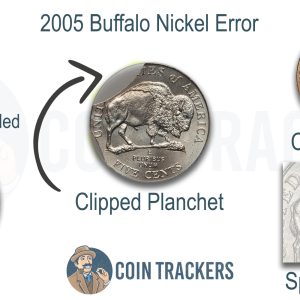
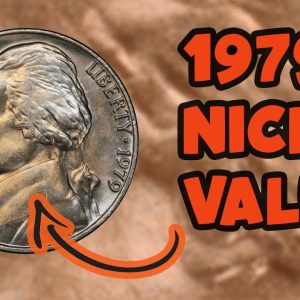
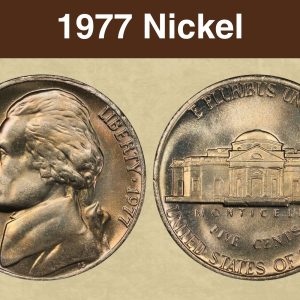
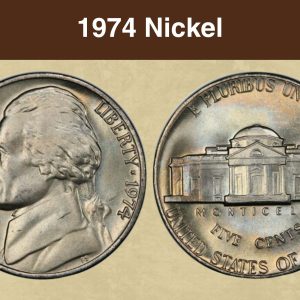
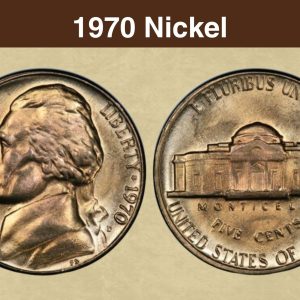
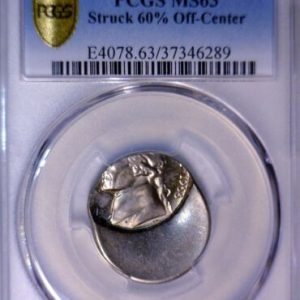
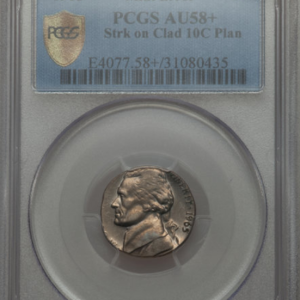
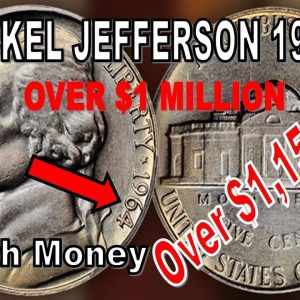
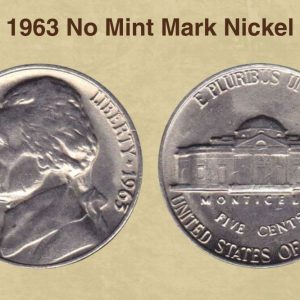
Is a 1973 nickel worth anything?
A 1973 nickel is typically only worth its face value of five cents, unless it is an error coin, a high-grade uncirculated coin, or has the rare “Full Steps” designation on the reverse, which can significantly increase its value. To determine if your 1973 nickel is worth more than face value, you should check for a mint mark, assess its condition for “Full Steps,” or look for any manufacturing errors, such as the rare penny-on-nickel error, which may be a brown color and weigh the same as a pe…
What nickel error to look for?
Key nickel errors to look for include doubled dies, where design elements are doubled due to die strikes, off-center strikes, where the coin is struck outside its intended position, and mint mark errors, such as doubled or missing mint marks. Other valuable errors are speared bison on 2005 nickels, the 1943 double die Jefferson nickel, and 1937-D Buffalo nickel three legs.
Should a 1973 nickel have a mint mark?
The coin is uncertified and has a denomination of 5 cents. This piece of US currency falls within the Jefferson Nickel series, which has been minted since 1938. The product is a 1973 Jefferson Nickel without a mint mark, indicating that it was minted in Philadelphia.
What nickels to look for that are worth money?
Valuable nickels to look for include rare dates and mint marks like the 1913 Liberty Head, 1918/7-D Buffalo, and 1926-S Buffalo. Additionally, check for specific errors such as the 1955 “Double Die Reverse” (DDR) Jefferson, the 1942/1 “Overdate” Jefferson, or the 2005 “Speared Bison” Denver nickel. Other valuable categories include the 35% silver “War Nickels” from 1942–1945 and old Shield or Buffalo nickels minted before 1938.